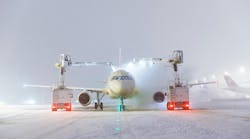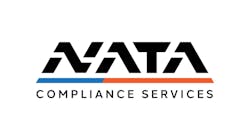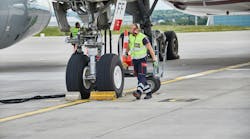In the last two years, there have been 11 known misfuelings – five in 2023 and six others in 2022, according to Keith Clark – senior quality control and technical representative at Phillips 66.
Eight of these misfuelings were caught prior to take-off, allowing the aircrafts’ tanks to be flushed and then refueled with the correct fuel.
Three others took off.
During a recent webinar presented by the Aviation Week Network, Clark discussed the mistakes humans make, which can lead to misfueled aircraft. The key to avoiding mistakes is clear communication and verifying information.
“Communication is the critical thing we do every day. We have to communicate. We also have to verify,” he said.
“We have to be perfect every time,” Clark emphasized.
Communication and verification play a critical role in ensuring perfect fueling operations.
“Every misfuelling is started out as a normal day. But then a mistake was made,” Clark warned.
“We’ve learned a lot about misfuelings over the last three, four years. We’ve been studying them a lot to try to understand why do they happen. Why does it continue to happen? And how do we figure it out? And what can we do to make it better?”
The first mistake that can occur, according to Clark, is insufficient communication from the pilot.
“Everything starts with the pilot. If the pilot comes in and says ‘top it off’ or ‘fill it up,’ that’s not a fuel order,” Clark said. “That starts the mistake.
“The second mistake is when the FBO doesn’t do anything about it, and they accept that fuel order,” he continued. “And instead of saying, ‘please verify fuel type’ they say, ‘I know what kind of fuel goes in that aircraft.’”
Neither the pilot nor the FBO can make assumptions.
“That’s why we want to have the communication, the verification,” Clark said. “We want to have two people working together to not make that same mistake.
The third mistake that can happen involved the fueling placards on the aircraft. These placards exist to re-confirm the type of fuel the aircraft requires.
However, missing, faded, damaged and poorly labeled placards can all lead to misfuelings
Compounding the issue, if line service workers think they know the correct fuel, they may not even look for the placard.
Rather than making assumptions, Clark urged line service personnel to speak up if an aircraft's placard isn’t clear and easy-to-read.
Even after these three steps, there is still an opportunity to avoid aircraft taking off with the wrong fuel by having both the pilot and FBO confirm the correct information is conveyed on the fuel receipt.
“Before [pilots] sign that credit card receipt, do we point out the type of fuel that went into that aircraft?” Clark asked. “Does it say jet fuel, or jet with FSII additive or Avgas 100LL?
“Keep in mind, as the industry transitions from 100LL to unleaded products, we’re going to have more products out there. Currently airports have UL94, but that’s only approved for aircraft that are designed to run on 94 octane with an STC,” he pointed out.
Without clearly communicating fuel type, a normal day can turn into a tragic one, Clark reiterated. He added that new ideas and constant innovation are necessary to keep the industry safe.
“I ask everyone to join the movement. Save a Life, Verify Fuel Type,” Clark said, encouraging the fuel providers to use of the safety decals at all fueling locations and to regularly visit preventmisfueling.com to access training and other safety resources. “If you’re not talking to pilots about it, let’s start talking today. Let’s make sure when we see a bad placard, we bring that to the attention of the pilot.”







